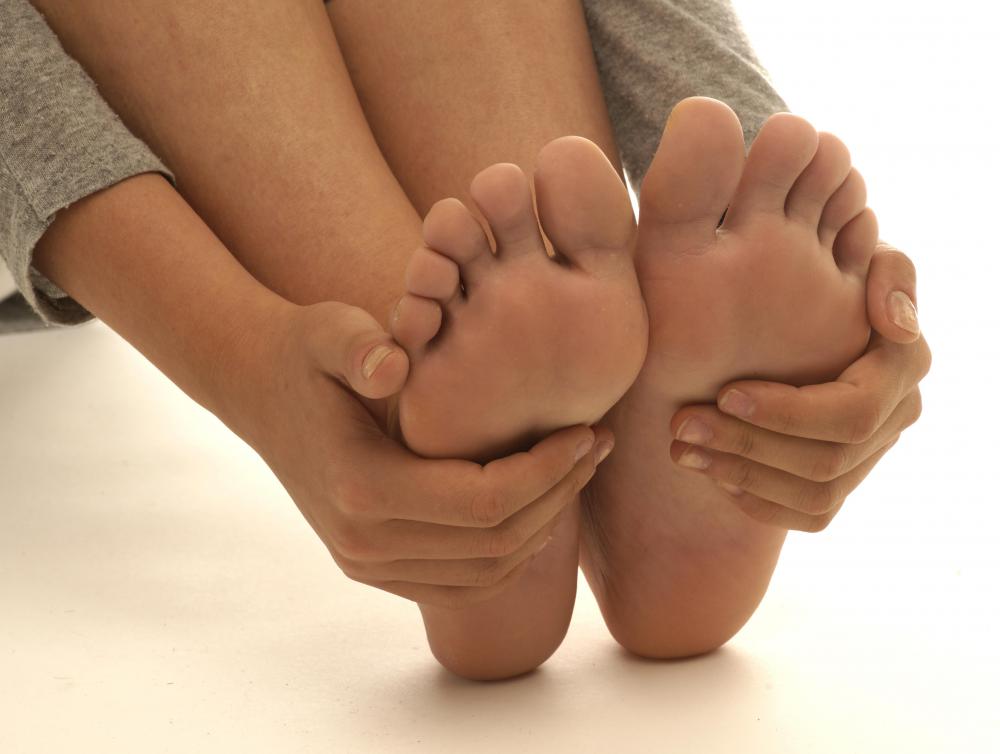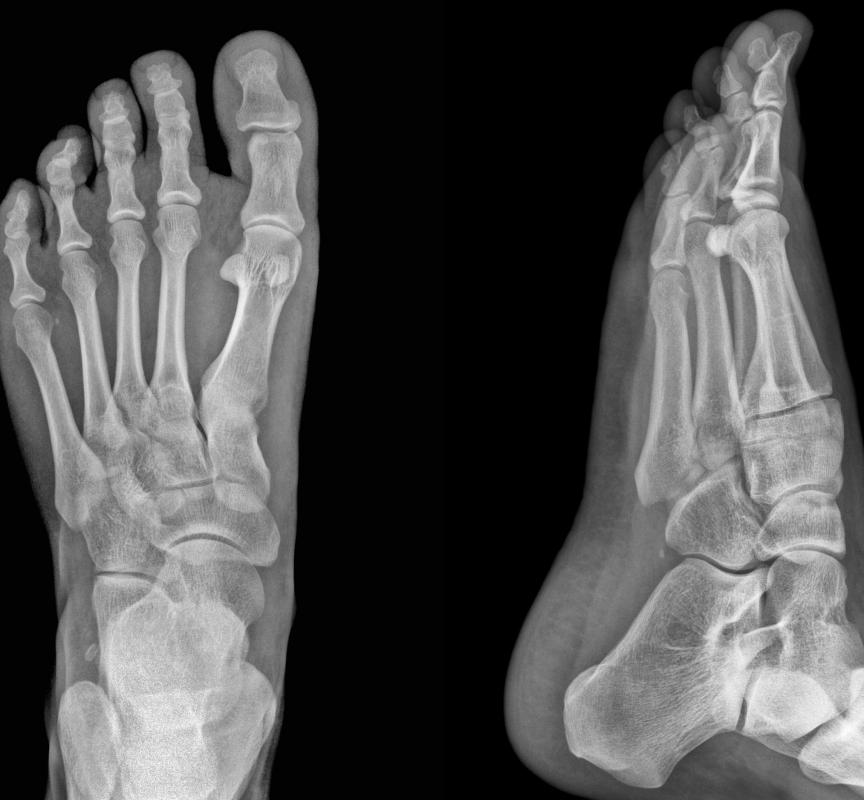At WiseGEEK, we're committed to delivering accurate, trustworthy information. Our expert-authored content is rigorously fact-checked and sourced from credible authorities. Discover how we uphold the highest standards in providing you with reliable knowledge.
What Is Metatarsus Valgus?
The metatarsals are the five long bones located between the tarsus, the seven bones that make up the ankle, and connect the lower leg to the foot and the phalanges or toe bones. Metatarsus valgus is a condition where this entire part of foot is shifted or rotated outward away from the body. The heel, however, also referred to as the calcaneous, remains in its proper position.
Commonly a congenital deformity occurring before or just after birth, metatarsus valgus can affect the way the body handles weight bearing and walking as it changes the structure of the foot and flattens the natural arch. When the weight of the body bears down on an improperly positioned foot it can throw off balance and cause pain issues which can radiate up through the ankles, legs, hips and even the back. In extreme cases metatarsus valgus may cause a condition called hip dysplasia, in which the hip joint becomes distorted causing problems for the leg's ability to swing through when attempting to take a step.

The malformation of the foot bones known as metatarsus valgus may also affect the toes and cause a condition known as hallux valgus, where the big toe shifts into the second toe. This can also alter the dynamics of the normal heel-toe gait sequence and cause balance difficulties. Pain may radiate from the toes due to the pressure of the first toe bearing down on the rest of the toes.

Treatment of metatarsus valgus is dependent on the severity of the shifted foot bones. In mild cases, the abnormal foot position is easily moved into a more normal position through passive stretching, a technique where there is no active contraction of the muscles attached to the bones. An orthotic worn inside shoes may help correct the deformity for mildly affected patients. Coupled with a regular stretching routine this method may coax the bones back into place and ease movement, balance and pain.

In more severe cases, especially when the bones are rigidly fixed and cannot be moved into a normal position, casting may be required to set the bones in their natural place. The foot is stretched several degrees closer to normal and a cast extending past the knee is applied for up to two weeks. This process is repeated several times until the foot resumes its natural shape. Casting for metatarsus valgus can be effective during the early years of life up to the age of four or five.

If casting is ineffective or the condition is present after the age of five, surgical intervention may be necessary to correct the deformity. Surgery for metatarsus valgus commonly involves an osteotomy of one or more of the bones to regain proper positioning. An osteotomy is a procedure in which the bones are cut to change their alignment.
AS FEATURED ON:
AS FEATURED ON:

















Discuss this Article
Post your comments